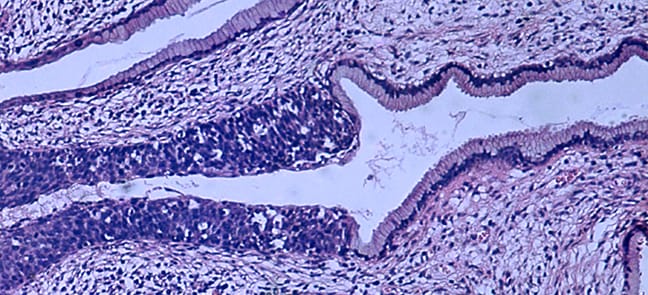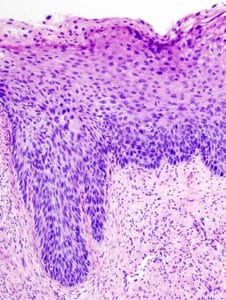Computational Genomics: New Frontiers in Cervical Cancer Treatment

As part of an international team of researchers studying cervical cancer, Claudia Rangel-Escareño’s job was a daunting one. To investigate the genetic underpinnings of the disease, the adjunct professor at CGU’s Institute of Mathematical Sciences joined a team tasked with analyzing mountains of data—information from billions of nucleotides.
Rangel-Escareño, an expert in computational genomics, and the team identified mutations linked to the development of cervical cancer. But the mutations that hadn’t been linked to the disease before were the most compelling.
Their findings suggest that drugs used to treat breast cancer could prove effective for cervical cancer patients.

“In this sense, this is highly important,” said Rangel-Escareño, who is also a CGU alumna (PhD, Mathematics, 2003). “The more specific you are when you develop a drug the better. What happens with cancer patients is some of them die—not because of the cancer itself. They die because of the level of toxicity of the [chemotherapy] drugs.”
This research—recently published in Nature—is expected to lead to significant advances in prevention and treatment.
Due to early detection and prevention, cases of cervical cancer have declined over the past few decades. But the disease continues to devastate lives and communities across the globe. It is the fourth most common type of cancer affecting women worldwide.
The team’s study involved researchers from the United States, Norway, and Mexico, specifically the National Institute of Genomic Medicine where Rangel-Escareño leads a group of mathematicians and computational biologists. This is a worldwide battle against cancer,” she said. “[The National Institute of Genomic Medicine] is part of this effort that seeks to understand the molecular mechanisms that underlie the disease.”
Researchers studied genetic information from tumors from more than 100 patients from Norway and Mexico. Rangel-Escareño’s expertise in the statistical and computational analysis of genetic data—or computational genomics—played an important role in the study. The amount of information from DNA is staggering. Billions of nucleotides—the building blocks of DNA—must be analyzed to map a single genome, the full set of genetic instructions needed to make cells, tissue, and organs in the human body.

The research presented tremendous mathematical challenges. Different sets of data required different types of mathematical modeling to interpret. Statistical error needed to be detected and filtered from the valid genetic information. There was a large number of unknown variables, but only a limited number of observations that could be made.
“It’s like asking millions of questions but only having a few sources for answers,” Rangel-Escareño said.
Of the 13 mutations researchers identified, eight had never been linked to cervical cancer before, and two hadn’t been associated with any type of cancer.
But one of the most notable findings was a mutation that occurred in a gene known as ERBB2. These mutations were linked to breast cancer, but not cervical cancer. Drugs known as ERBB2 inhibitors that target that gene—and are currently available and FDA approved—may prove effective in treating cervical cancer.
Researchers also discovered that the human papillomavirus (HPV)—a sexually transmitted virus linked to cervical cancer—interacts with mutations in the immune system, shedding new light on how the disease develops.
The research was funded by the Slim Initiative for Genomic Medicine in the Americas, which promotes the study of genomic medicine in the service of global health.